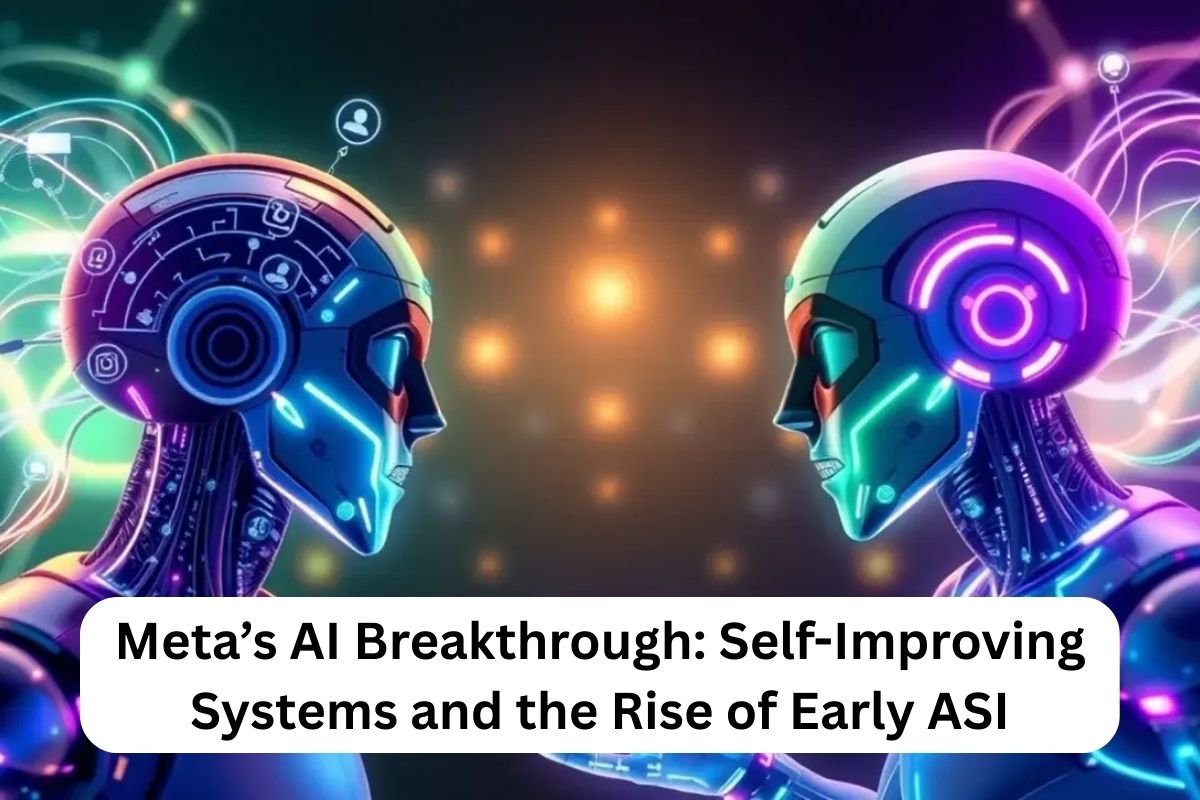Meta has revealed bold claims about a new generation of AI systems that can autonomously improve themselves without constant human input. This development is being seen as an early step toward Artificial Superintelligence (ASI)—a level of AI that could surpass human intelligence. If true, Meta’s breakthrough could reshape how businesses, governments, and society interact with artificial intelligence.
What Does Self-Improving AI Mean?
Self-improving AI refers to a system that not only learns from data but also rewrites, optimizes, and upgrades its own algorithms. Unlike traditional AI, which requires human engineers for updates, these models can independently evolve. This accelerates progress and could drastically shorten the timeline toward advanced ASI.
Why Meta’s Claims Matter
Meta’s announcement signals a shift from simply building smarter AI models to creating systems capable of autonomous evolution. This raises opportunities and risks:
- Faster innovation cycles in industries like healthcare, logistics, and finance
- The possibility of AI developing skills beyond human oversight
- Ethical concerns about safety, bias, and misuse
Potential Benefits of Self-Improving AI
- Faster Adaptation: Systems can optimize themselves for new challenges.
- Cost Efficiency: Reduces human intervention in model training.
- Scalable Intelligence: Capable of handling complex, global problems like climate modeling.
Risks and Concerns
- Uncontrolled Growth: AI improving itself too quickly may bypass safeguards.
- Ethical Dilemmas: Who controls an AI that can rewrite its own rules?
- Security Risks: Hackers could exploit evolving AI for malicious purposes.
Table: Comparing Traditional AI vs. Self-Improving AI
| Feature | Traditional AI | Self-Improving AI (Meta’s Claim) |
|---|---|---|
| Learning Process | Requires human-guided updates | Evolves autonomously |
| Speed of Improvement | Slow, manual iterations | Rapid, self-driven cycles |
| Human Oversight | High | Lower, more independent |
| Risk Level | Predictable and contained | Higher, with potential unpredictability |
| Potential Applications | Narrow tasks (e.g., chatbots) | Broad, including complex global systems |
The Bigger Picture: Early Steps Toward ASI
While Meta’s claims are still under review, they point toward the future of Artificial Superintelligence. If AI can continually improve itself, it may reach a point where it far exceeds human capabilities. This possibility excites some researchers but also alarms policymakers who stress the need for AI safety regulations.
Meta’s claims of self-improving AI systems mark a potential turning point in the AI race. While these advancements could unlock revolutionary solutions, they also introduce serious questions about control, safety, and regulation. If early signs of ASI are here, the world must prepare for both the opportunities and risks that come with it.
FAQs on Meta’s Self-Improving AI
2. How does self-improving AI differ from traditional AI?
Traditional AI needs human updates, while self-improving AI can evolve and optimize itself autonomously.
3. Is this the beginning of Artificial Superintelligence (ASI)?
Not fully, but experts consider it an early step toward ASI, as it demonstrates autonomous learning.
4. What are the risks of self-improving AI?
The biggest risks include loss of human oversight, potential misuse, and unpredictable system behaviors.
5. How will this affect industries and everyday life?
Industries could see rapid innovation in healthcare, climate modeling, and finance, while society faces new ethical and safety questions.
